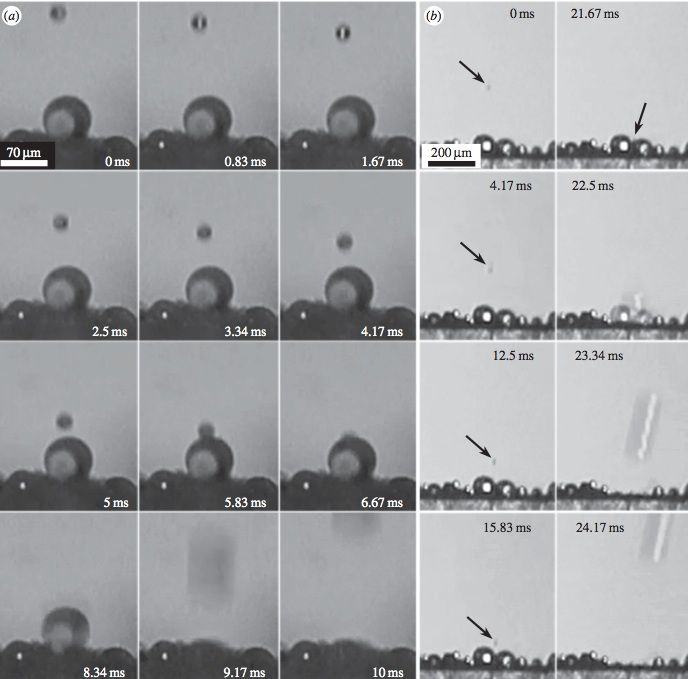Water Drops Leap Off Gecko Skin Thanks to Tiny Spines
Specialized hydrophobic structures on gecko skin encourage dewdrops to be swept away by the wind or to collide and shoot off one another like pool balls
/https://tf-cmsv2-smithsonianmag-media.s3.amazonaws.com/filer/38/dd/38dd1aed-1f96-46bd-8890-1b5eca294105/gecko.jpg)
Geckos are the darlings of bio-inspired physicists and roboticists for their unprecedented ability to cling to walls and scamper across ceilings, using hair-like structures on their toes that take advantage of the van der Waals force. As a result, gecko feet get most of the research attention.
Now an Australian and British team is making a case for gecko skin. As they recently discovered, tiny super-hydrophobic spines on the lizards’ birthday suits actively propel water droplets, either gently releasing them like aquatic sky lanterns or shooting them away like pool balls. As the team reports in the Royal Society Interface, this newly discovered “geckovescence” is probably a valuable strategy for staying disease-free. In a humid environment, keeping the skin dry would help to discourage bacteria or fungi from taking up residence and causing nasty infections, a bane of some reptiles.
The researchers made the discovery with wild box-patterned geckos, a type of lizard that lives in places in Australia that get little rain but that are heavy on humidity and overnight dew. The team unfortunately had to euthanize the geckos for the experiment. They removed the lizards’ skin and divided it into small sections, which they placed on a copper plate that was kept colder than the dew point in the lab, encouraging condensation to form naturally. They used a scanning electron microscope to zoom in on the gecko’s fine skin spines, each one just a few micrometers high, and also filmed the skin on the macro scale.
The team identified not one but several mechanisms responsible for clearing gecko skin of water. Like a waterproof lotus leaf, the gecko skin’s structure encourages small dewdrops to aggregate together, preventing water from evenly distributing all over the surface. As more water comes together, the droplets grow. When the drops reach a large enough size, they begin to interact with forces such as wind and gravity, while being simultaneously repelled by the hydrophobic gecko spines. A water droplet measuring about 2 millimeters across, for example, would be feeling the repulsive power of about 100,000 skin spines. Eventually the external processes win, and the droplet is propelled off the skin.

The team also observed that when a tiny external droplet (from fog, for example) lands on a bigger droplet already on the gecko, the resulting change in surface energy shoots the large droplet off at high speed, almost like two pool balls colliding. Finally, they found that very small water drops—with diameters of about 10 to 80 micrometers—require no outside interacting forces to be propelled from the skin. They’re small enough that the hydrophobic spines simply get rid of them. The researchers only tested box-patterned geckos, but previous studies have found microspines on all types of geckos, hinting that other species might have water-propelling powers.
Geckos, it seems, may not only aid in bio-inspired adhesive design, but also in potential self-drying surfaces. Perhaps every window of the future will be embedded with its own synthetic gecko skin, banning condensation before it can even form.
/https://tf-cmsv2-smithsonianmag-media.s3.amazonaws.com/accounts/headshot/Rachel-Nuwer-240.jpg)
/https://tf-cmsv2-smithsonianmag-media.s3.amazonaws.com/accounts/headshot/Rachel-Nuwer-240.jpg)